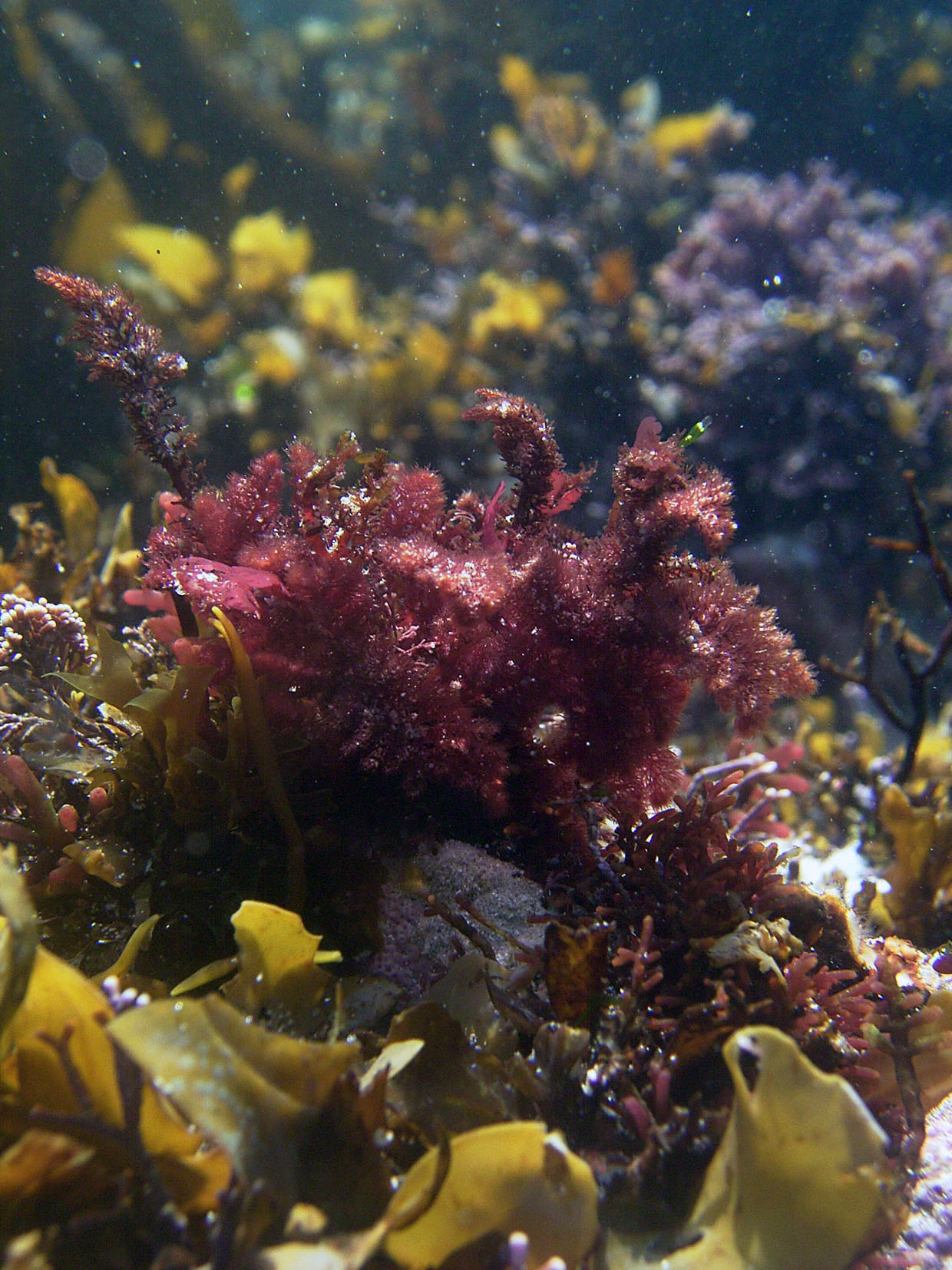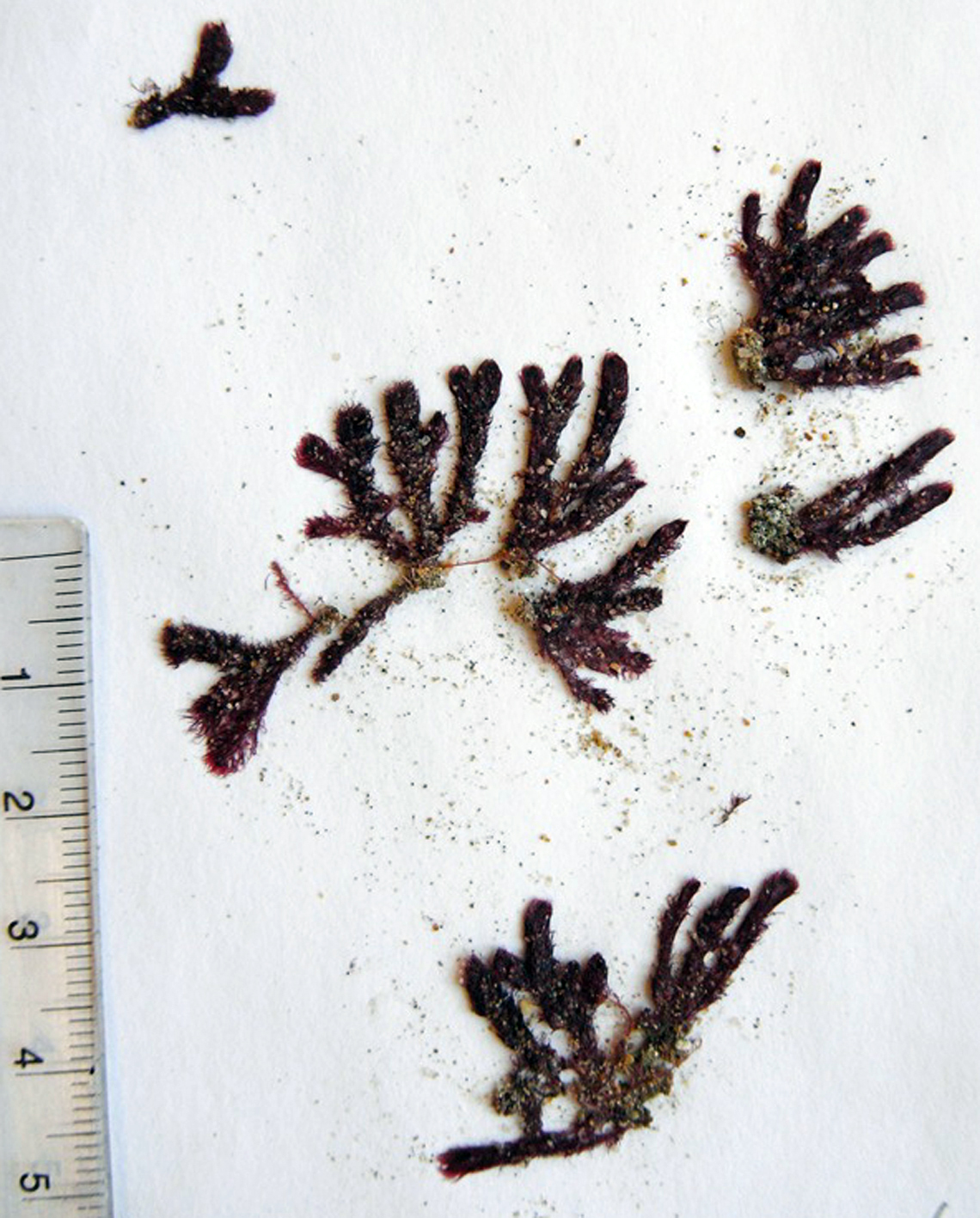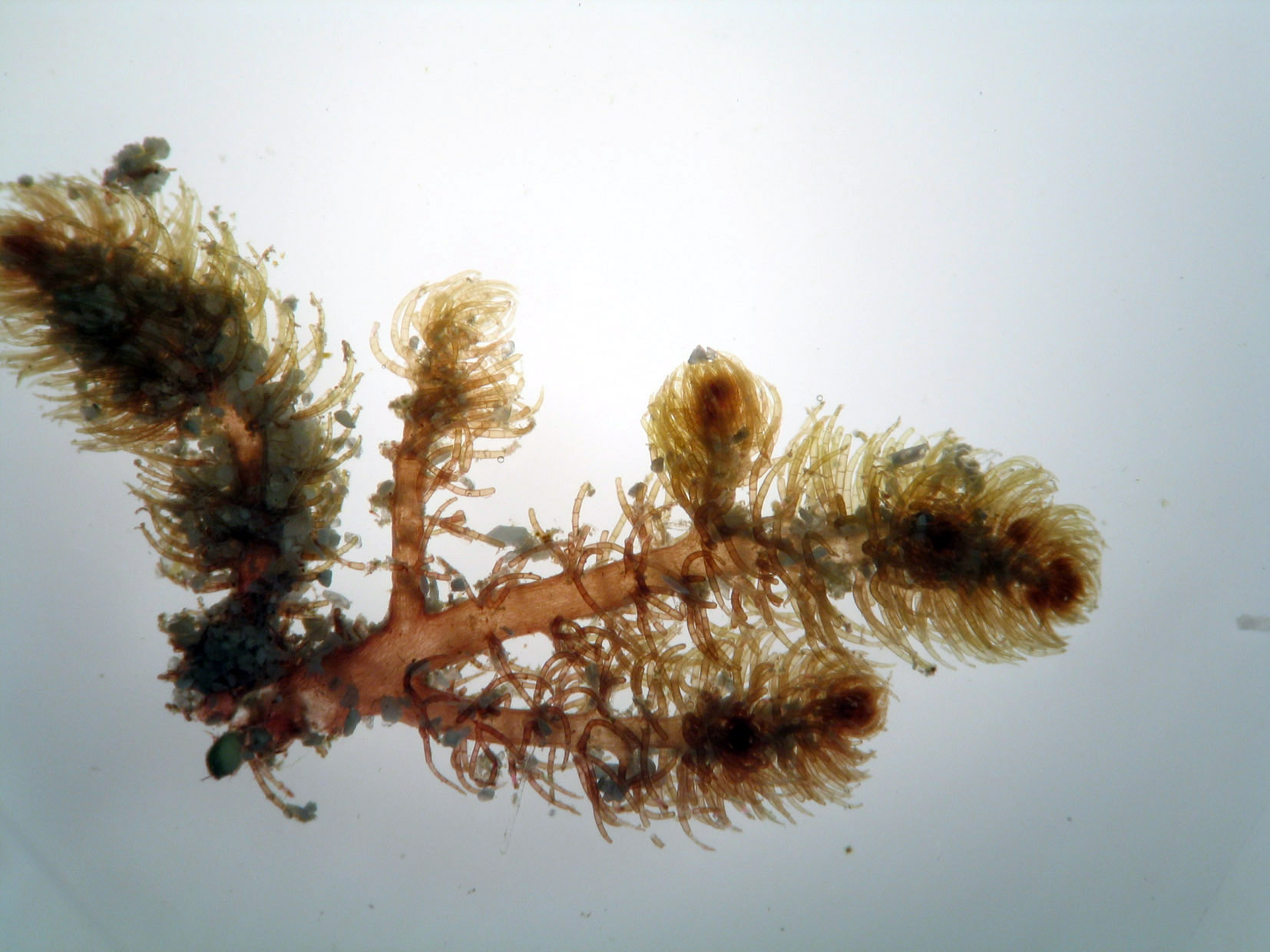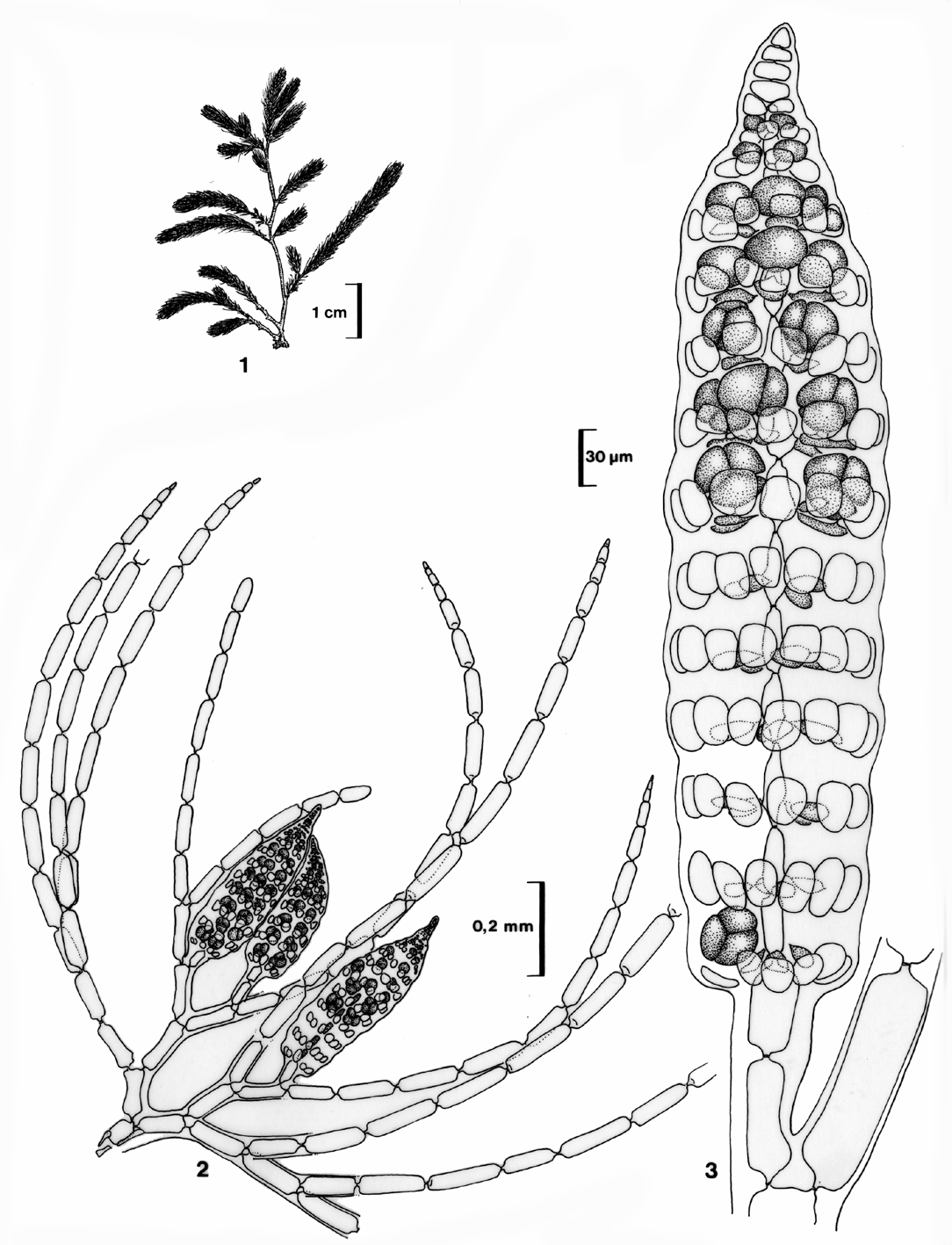Seaweeds of the South African South Coast


Order Ceramiales
Family Dasyaceae
Dasya scoparia Harvey ex J. Agardh 1841: 34-35
Plants erect, up to ca. 10 cm tall. Axes irregularly branched, thickly clothed with pseudolaterals, giving rather shaggy appearance. Principal axis with 5 pericentral cells and thick cortex, up to 1 mm in diameter. Pseudolaterals monosiphonous, arising one per segment in spiral pattern, in proximal parts three or four times dichotomously branched, ca. 70 µm in diameter, tapering distally; ultimate ramuli up to ca. 15 cells long, incurved, the cells 2-3 times longer than broad. Tetrasporangial stichidia conical to cylindrical, forming one arm of an ultimate or penultimate dichotomy of a pseudolateral. Stichidia up to 600 µm long, 150 µm in diameter; segments with four pericentral cells and tetrasporangia. Sporangia globose, ca. 40 µm in diameter, tetrahedrally divided. Tetrasporiferous pericentral cells with three cover cells in a horizontal row. Sexual structures not found.
Collections, ecology and regional distribution
Recorded from Lamberts Bay on the west coast to northern Kwazulu-Natal (9-58). Found in rock pools and from the sublittoral fringe to shallow sublittoral.
World distribution: Africa: Namibia, Mozambique, Kenya and Mauritius, Reunion Island. Asia: China and Japan. (Guiry & Guiry 2010).
Type locality: Cape of Good Hope, South Africa (Agardh 1841).

Dasya scoparia, Arniston.

Dasya scoparia, Goukamma, pressed specimen (BOL).

Dasya scoparia, fresh material (Arniston) under dissecting microscope.

Dasya scoparia. 1. Habit. 2. Pseudolateral with tetrasporangial stichidia. 3. Tetrasporangial stichidium in detail. Reproduced from Stegenga et al. (1997).
References Dasya scoparia
Agardh, J. G. 1841. In historiam algarum symbolae. Linnaea 15: 1-50, 443-457.
Guiry, M.D. & Guiry, G.M. 2013. AlgaeBase. World-wide electronic publication, National University of Ireland, Galway. http://www.algaebase.org; searched August 2010.
Stegenga, H., Bolton, J.J. & R. J. Anderson. 1997. Seaweeds of the South African west coast. Contributions from the Bolus Herbarium 18: 655 pp.
Cite this record as:
Anderson RJ, Stegenga H, Bolton JJ. 2016. Seaweeds of the South African South Coast.
World Wide Web electronic publication, University of Cape Town, http://southafrseaweeds.uct.ac.za; Accessed on 07 January 2026.